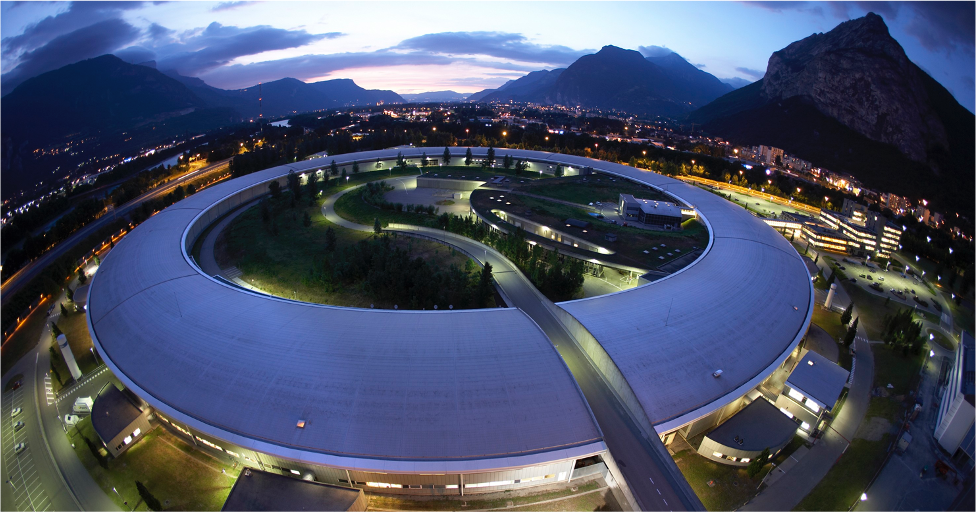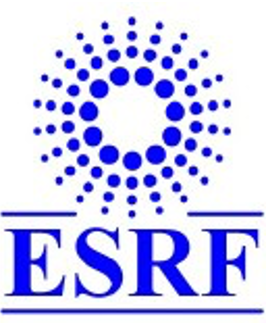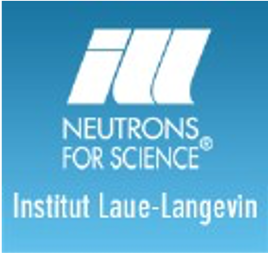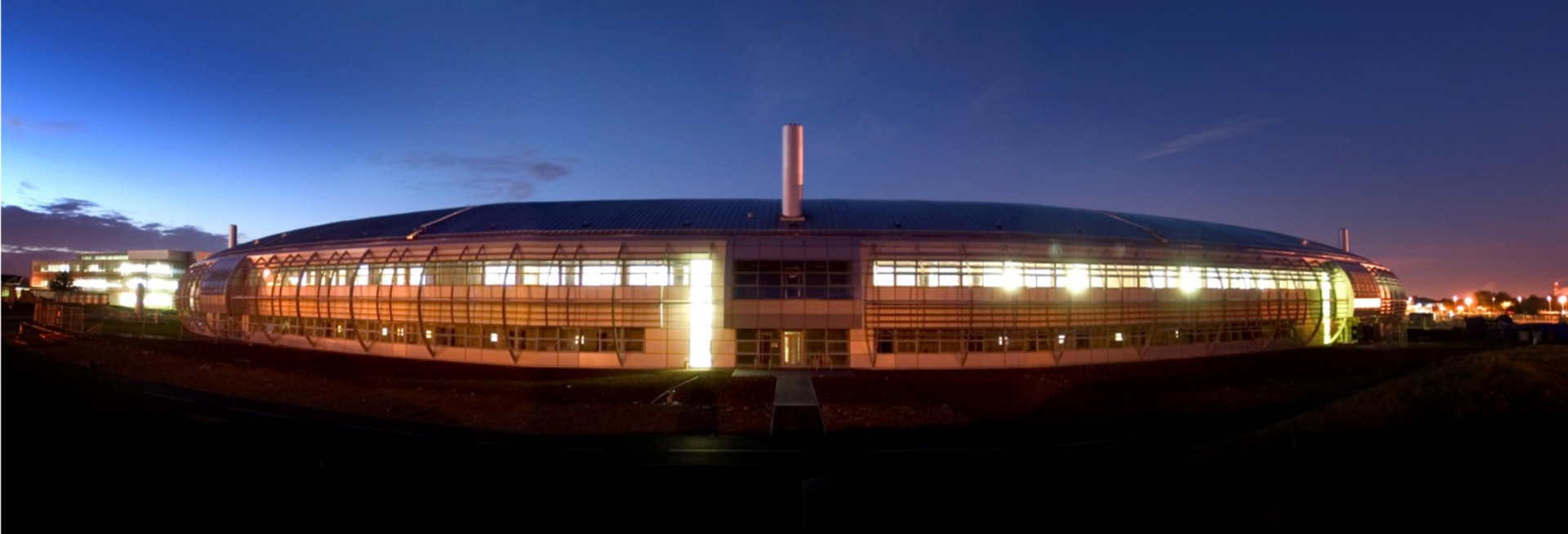
The European Synchrotron Radiation Facility. Photo courtesy of P. Glinter, ESRF.
Synchrotron X-ray sources
![]()
Diamond Light Source is located 15 miles south of Oxford, and neighbours both the Rutherford Appleton Laboratories (ISIS) and the Harwell Science Campus. We use beamlines I16 and I19 (hard x-ray energies) and I10 (soft x-ray energies) to perform diffraction experiments sensitive to long-range electronic order. Analysis of the diffraction signals provides information about the electronic behaviour of the material. For example, it is possible to determine the degree of charge segregation between like elements in charge-ordered systems or observe the alignment and reorientation of spins at magnetic phase transitions.

The European Synchrotron Radiation Facility, pictured above, is located in Grenoble, France, on the same site as the ILL reactor neutron source. In our field of research the synchrotron offers similar facilities to Diamond Light Source. In particular, beamline ID08 is well established in soft X-ray diffraction, and the UK CRG beamline, BM28 (XMaS), has pioneered diffraction studies with in-situ electric polarisation measurements; ideally suited to multiferroics research.
Neutron sources
ISIS is the UK pulsed neutron spallation source. Neutron diffraction is ideally suited to the study of magnetism, and we frequently use ISIS instruments (in particular WISH) to solve the magnetic structures of powder and single-crystal samples. We also perform experiments to observe changes in magnetic structures when the material is subjected to extreme external environments such as high electric and magnetic fields.

The ILL is a reactor neutron source. We take advantage of the continuous, high neutron flux of the reactor to conduct experiments that complement our magnetic diffraction studies performed at ISIS.


